Unbelievable Sights in Hassa, Tepehan, and Hatay, Turkey
March 10, 2023 – Day 5, Team 2
Day five was the longest day in our reconnaissance trip because we were scheduled to drive from Gaziantep to the southern part of the Hatay province, which is a three-hour drive each way. Team 1 made this trek a week prior using the main highway, so Team 2 decided to change things up by taking the “scenic route,” a euphemism for the road that ran parallel to the Syrian border. This approach was not without reward; however, because it passed through Hassa, a small town with a population of only 2,500 residents. Being healthcare experts, we started with a visit to the Hassa Hospital campus, which is comprised of an existing 25-year-old hospital and a new hospital that was scheduled to open in May. When the earthquake struck, the power was interrupted for 45 minutes, communications were knocked out for 48 hours, and the water supply became non-potable due to interruptions at the local water treatment plant. For fear of structural damage to the existing hospital, the facility management made the decisive call to move all patients and staff to the new, unfinished hospital immediately, where they were able to resume hospital functions and serve the community in the weeks to come. Team 2 was given a tour of both new and existing hospitals by the hospital’s Head of Information Technology, and we were pleasantly surprised at the structural and, perhaps more importantly, the non-structural performance of both buildings. The buildings exhibited little to no structural damage and the interior finishes, ceilings, and partitions were relatively unscathed. We then thanked the hospital staff for their kindness and generosity before making our way to the town center.
Not long after leaving the car to walk around the heart of the town, we were flagged down by a local resident who was insistent that we should follow her to her home where she claimed there was something we had to see with our own eyes. Although initially wary, our skepticism disappeared entirely when we saw something we will never forget: the fault ruptured through a few blocks of the town and had shifted the ground up to 8.5 feet horizontally and 42 inches vertically. In dramatic fashion, the rupture tore through the back side of an elementary school, separating the mechanical room from the rest of the building. With mouths agape, we followed the path of destruction to evaluate the extent of the rupture. Block after block, home after home, we traced the path of the rupture and noticed that it dissipated in intensity the further we walked. Ironically, by the time we determined the end of the surface rupture, we were only a few blocks away from our car. It dawned on us that had we not followed the local resident to her home we would have missed such an incredible opportunity. We thanked her profusely before making our way to Tepehan.
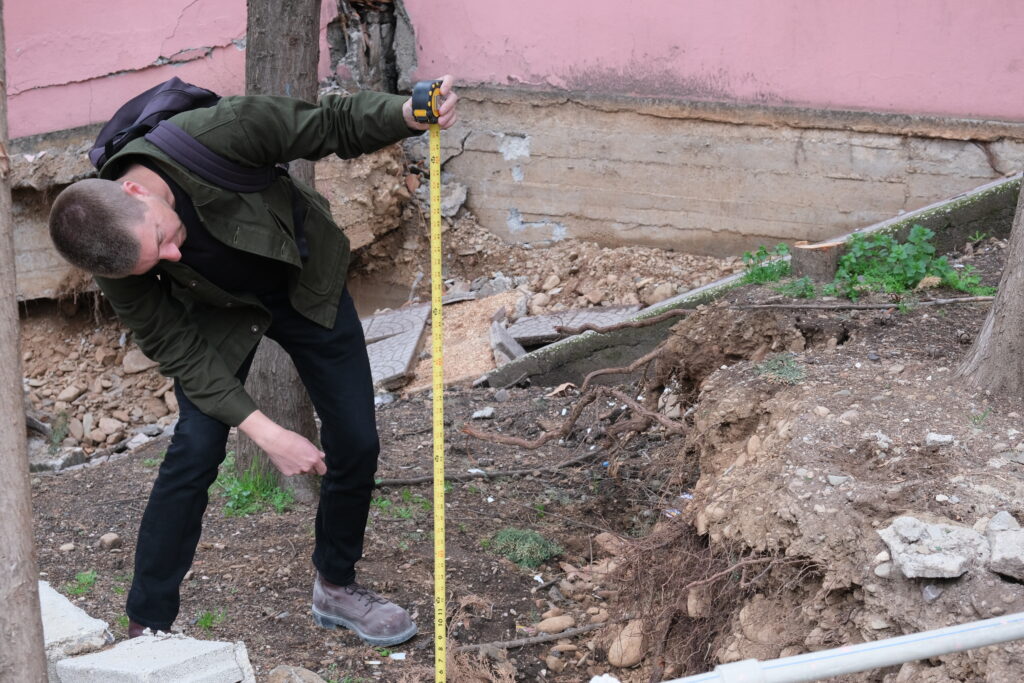
Adam measures the height of the rupture (~42” height difference).
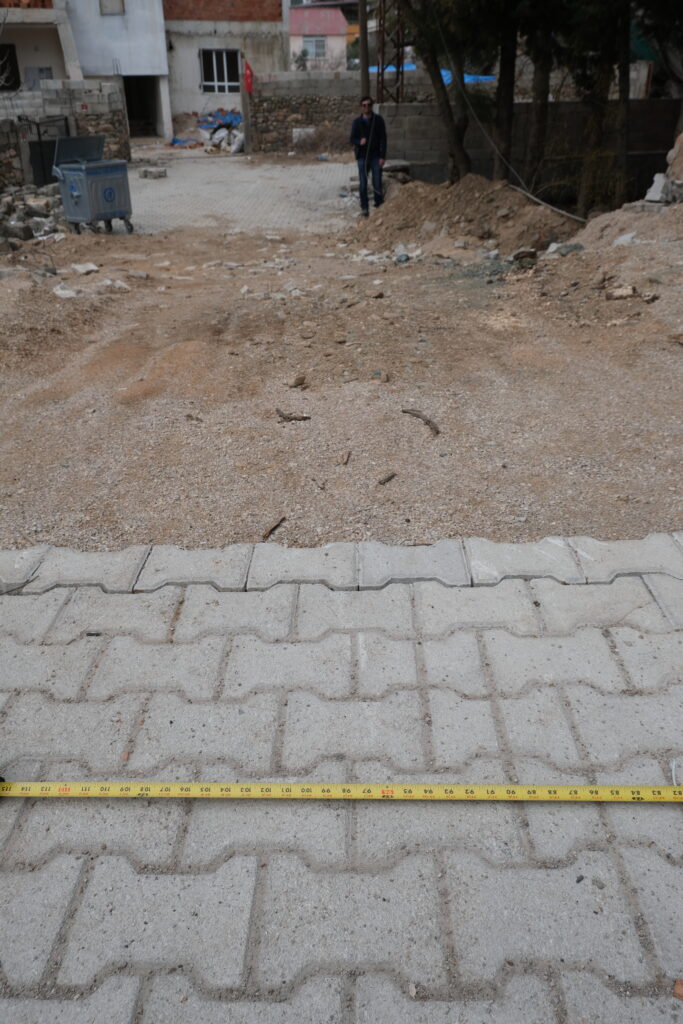
Anthony stands at the shifted edge of the road to indicate the offset of the rupture (~8.5 feet offset).
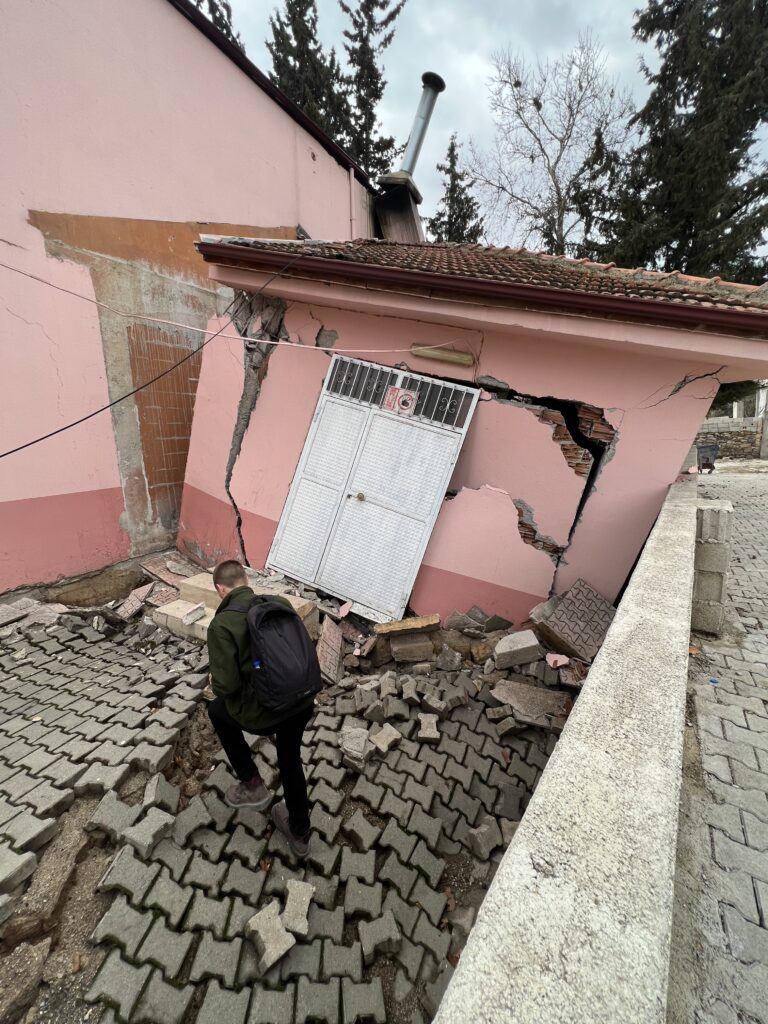
Adam walks over broken paving. In the background, the portion of the school that was severely damaged by the rupture itself.
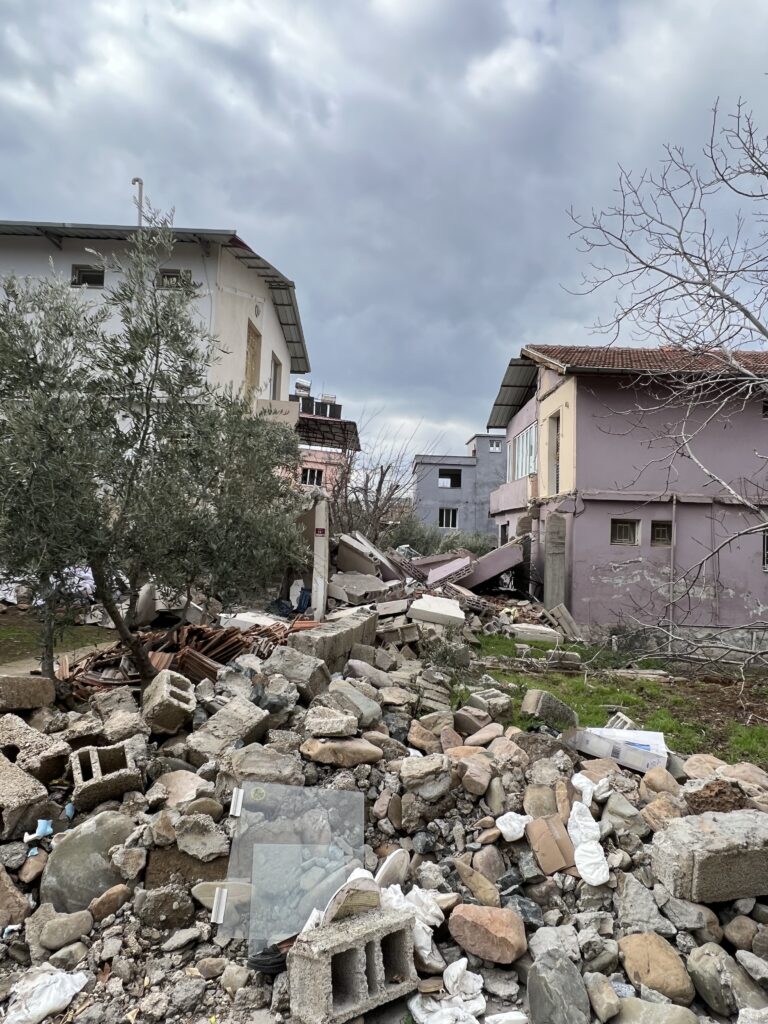
The path of the fault rupture, which left a wake of destruction wherever it went.
Tepehan is rural community that is characterized by rolling hills, idyllic scenery, and its numerous olive groves. That peacefulness was suddenly interrupted on February 6 by the earthquake, which ripped open a vast chasm in the ground. Many news publications reported on this unbelievable sight, so we too had to see it with our own eyes. According to CNN, the crevasse measured 130 feet deep, 900 feet long, and 165 feet wide. It was so enormous that we struggled to take a photograph that could capture its size faithfully. We then caught the attention of local children who were curious of our presence, so we gave them some butterscotch candy–specifically Werther’s, a crowd favorite–before making our way back to the hotel, still in awe at what we had seen.
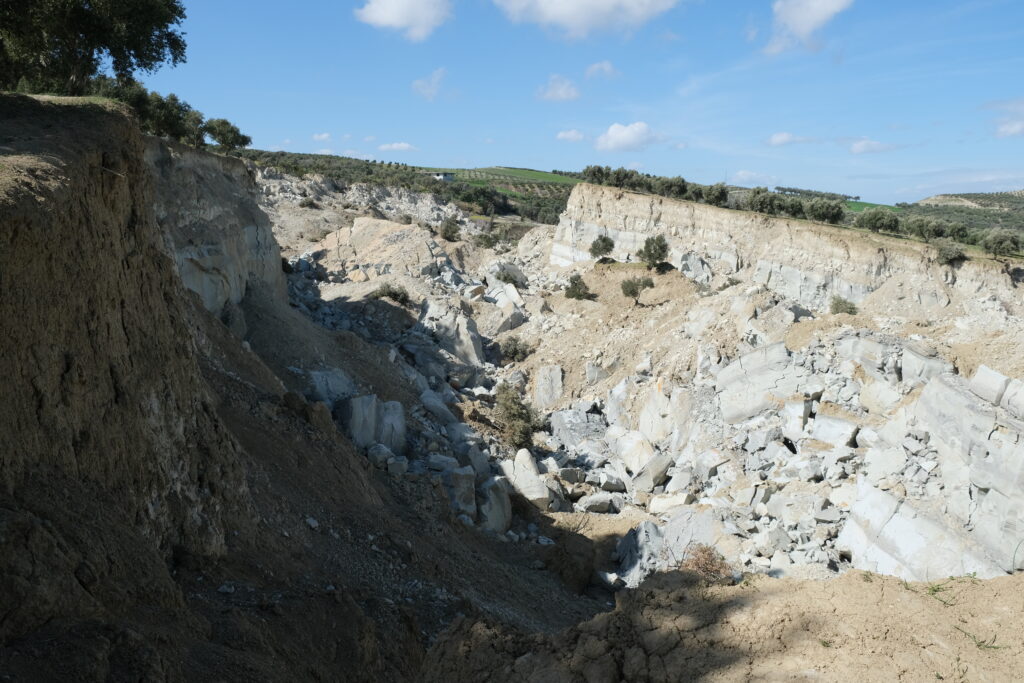
At the olive grove chasm in Tepehan. It is approximately 130 feet deep, 900 feet long, and 165 feet wide.
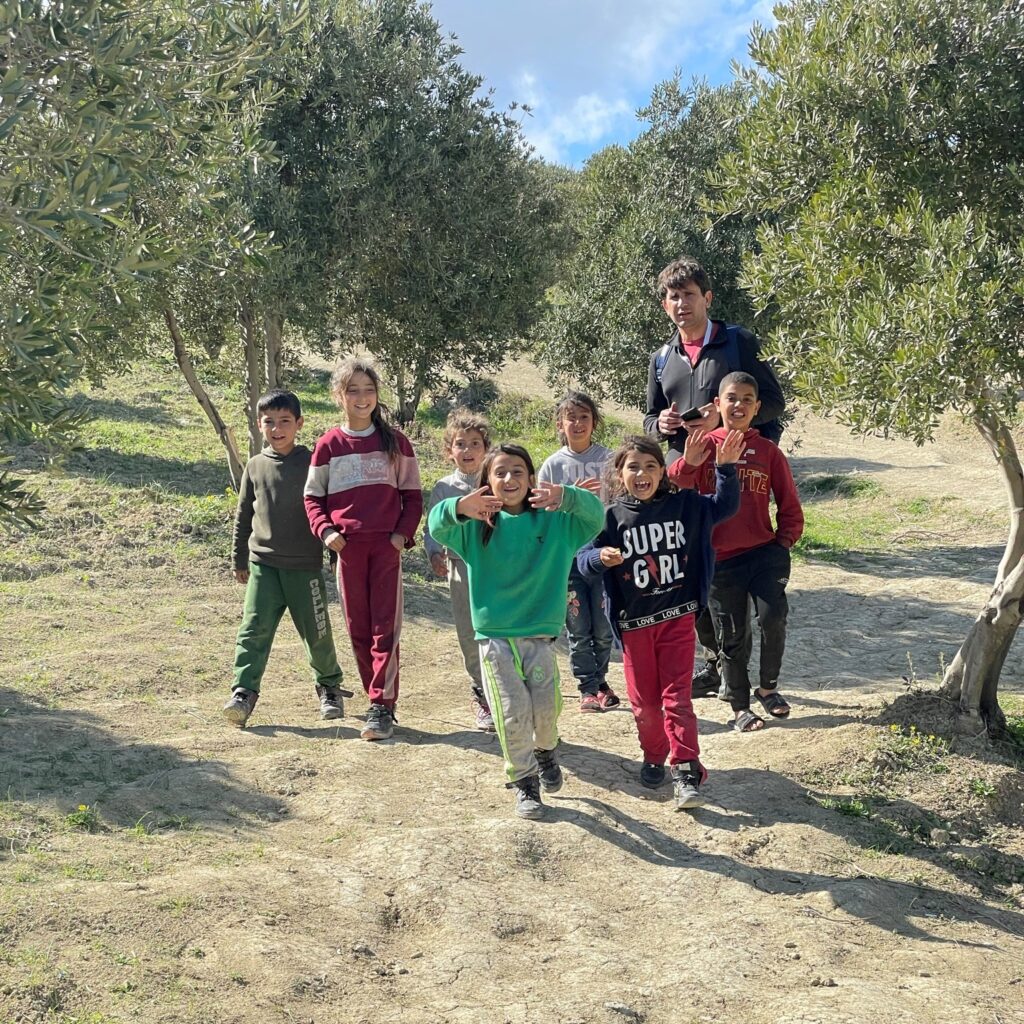
Local children from Tepehan. Baris, a Turkish contractor from the Bay Area and a Team 2 member (back right), entertained the children with funny stories while the rest of the team took photos.

